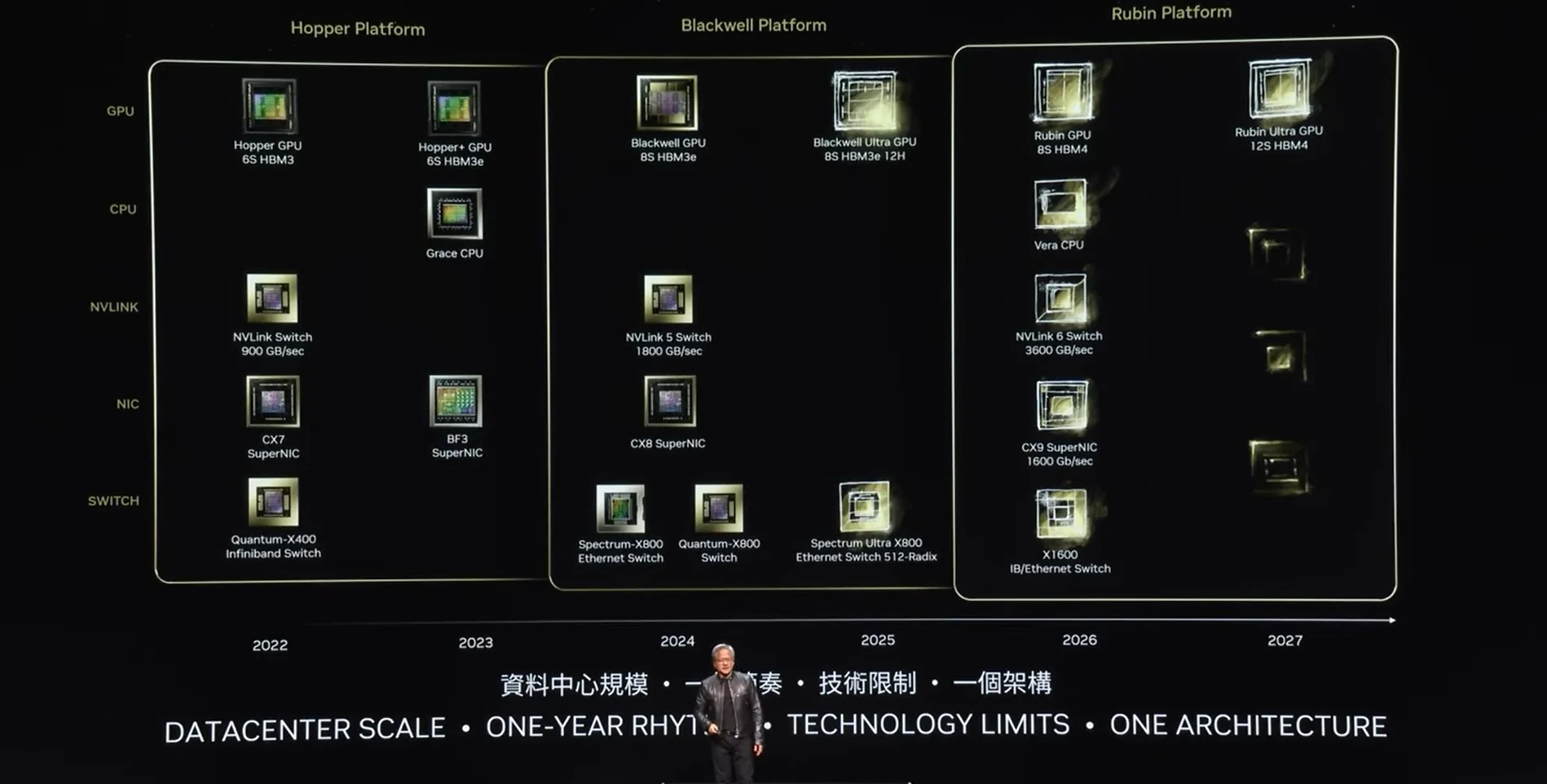NVIDIA CEO Jensen Huang used the keynote opening address at Taiwan’s Computex 2024 event to unveil next-gen tech and the roadmap the company will pursue to become the leading AI hardware platform.
The theme of his address was “Accelerate everything” and Huang unveiled new chips, faster AI networking, and an ambitious development roadmap. From AI PCs to massive AI factories, NVIDIA wants to be the enabler of what comes next with AI.
“The future of computing is accelerated,” Huang said. “With our innovations in AI and accelerated computing, we’re pushing the boundaries of what’s possible and driving the next wave of technological advancement.”
Here’s a quick look at some of the announcements:
New chips
The Blackwell GPUs are hot off the production line but Huang says we can already expect an upgraded Blackwell Ultra GPU later this year. He said that NVIDIA’s development roadmap will see a new family of chips released every year.
“Our company has a one-year rhythm. Our basic philosophy is very simple: build the entire data center scale, disaggregate and sell to you parts on a one-year rhythm, and push everything to technology limits,” Huang explained.
Huang announced that 2026 will see its Rubin platform succeed the Blackwell family of GPUs.

AI factories
Huang named several computing firms that will build “AI factories” that will deliver cloud, on-premises, embedded, and edge AI systems using NVIDIA GPUs and networking.
Huang said, “The next industrial revolution has begun. Companies and countries are partnering with NVIDIA to shift the trillion-dollar traditional data centers to accelerated computing and build a new type of data center — AI factories — to produce a new commodity: artificial intelligence.”
NVIDIA MGX (Modular Server Reference Architecture) is a blueprint for building data center servers that focuses on accelerated computing. It uses a standardized approach for building servers using NVIDIA products, which makes it a lot easier for these AI factories to be built.
NVIDIA Spectrum-X
NVIDIA uses NVLink to move data between GPUs, but moving data between GPU pods within or between data centers presents an additional challenge.
NVIDIA Spectrum-X is the world’s first Ethernet networking platform specifically designed to enhance the performance of AI workloads. Naturally, NVIDIA Spectrum-X is optimized for NVIDIA’s hardware.
NVIDIA says Spectrum-X accelerates generative AI network performance by 1.6x over traditional Ethernet fabrics.
Last week we reported that Big Tech computing companies are working to develop an open accelerated AI networking standard without NVIDIA’s input.
Even so, Huang said Spectrum-X is already being adopted by companies like Dell Technologies, Hewlett Packard Enterprise, and Lenovo.
NIM
NVIDIA NIM, which stands for NVIDIA Inference Microservices, is a set of tools designed to simplify and accelerate the deployment of generative AI models.
Before you can use an AI model, developers need to deploy it. Instead of having to tinker with the nuts and bolts of that process, NVIDIA NIMs simplify deployment by automatically containerizing AI models and optimizing them for NVIDIA hardware.
It’s like the difference between buying chopping, and assembling all the ingredients for a meal versus popping a readymade meal in the oven.
Huang announced that the Llama 3 NIM was now available as a free download for developers to try out. Huang also unveiled Nvidia Ace NIMs which includes a Digital Human model capable of generating AI human models with lifelike skin.
You can watch the full keynote address to see more details on AI RTX-powered PCs and laptops, Nividia’s Isaac ROS 3.0 robotics platform, and how factories are using NVIDIA’s tech to create digital twins on their factories to train robots.


